| August 28, 2009
The Great North American
Loudspeaker Tour: Wilson Audio Specialties

The Wilson Audio Specialties factory in Provo, Utah, USA.
Main designer: David Wilson
Products auditioned: Alexandria X-2 Series
2 loudspeaker ($158,000 USD per pair); Thor’s Hammer subwoofer ($21,000 each; two
operating in stereo).
Associated Equipment
- Amplifiers: VTL Siegfried monoblocks
- Preamplifiers: Audio Research Corporation
(ARC) Reference 5, ARC PH2
- Sources: Nagra V digital tape recorder, ARC
Reference CD8 CD player, EMM Labs DAC8 digital-to-analog converter, Basis turntable (Air
Tangent tonearm, Lyra Olympus cartridge, step-up transformer designed by John Curl)
- Cables: Transparent Audio
Setup details: The Alexandria X-2 Series 2
loudspeakers were operated full-range; the Thor’s Hammer stereo subwoofers were
crossed over with a low-pass signal at 37Hz.
Listening room: Although the Wilson
factory has its own listening rooms, this audition took place in David Wilson’s home,
in a large room measuring 40’L x 30’W. Polycylindrical diffusers are built into
the back of room, with a small bass trap located behind each Thor’s Hammer subwoofer
(which are close to the room’s left and right front corners). The peaked ceiling runs
the width of the room; the sidewalls are nonparallel -- the room is 9" narrower at
the front wall than at the rear wall. David Wilson described the room as "somewhat
lossy, but fast in the bass" due to the generous number of windows and the attendant
bass loss.
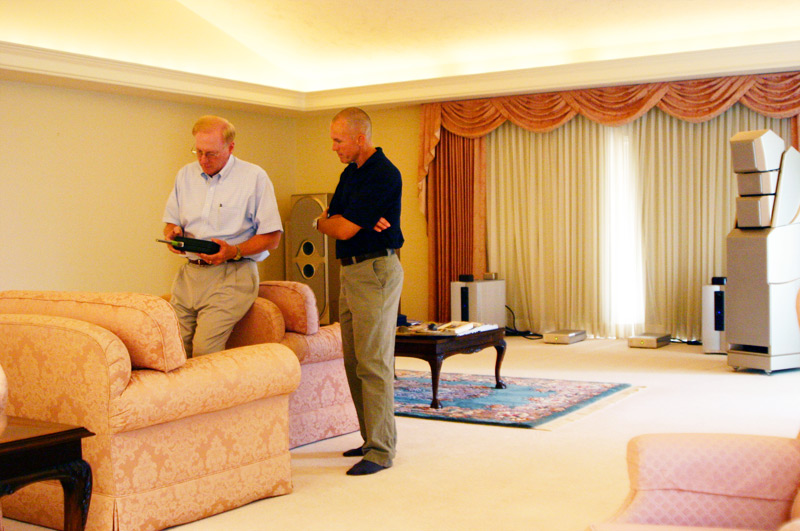
David Wilson (left) and Jeff Fritz in the listening room, behind them the
Alexandria X-2 Series 2 loudspeakers and Thor’s Hammer subwoofers.
David Wilson’s vision for the Alexandria X-2:
"wide dynamic range," "low in coloration," "high dynamic
contrast," "harmonically expressive," "adjustable in the time
domain," while being an "elegant package while not being overly complex,"
and giving "performance that is accessible and repeatable."
According to David Wilson, the Alexandria X-2 is
most suited to: Someone to whom sound and music are vitally important. Customers
do not typically purchase Wilson loudspeakers for "perceived status"; the
speakers "create an experience" for the owner not unlike that created by a live
musical event.
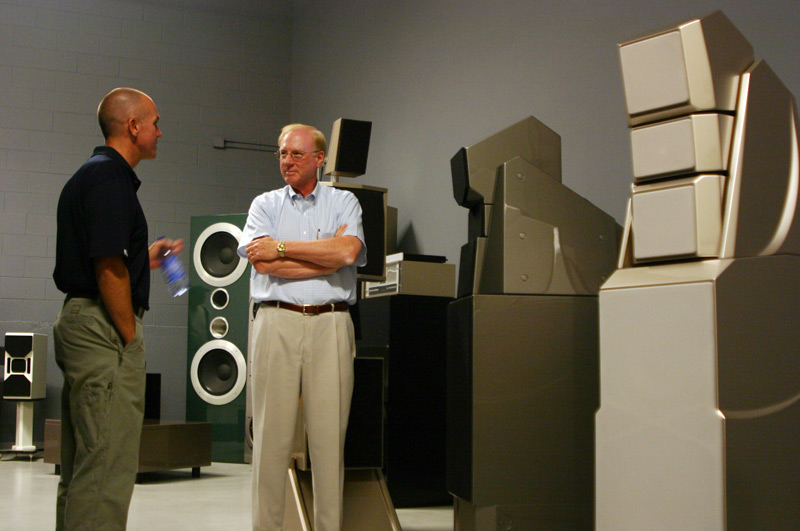
Jeff Fritz and David Wilson discuss the Alexandria X-2 Series 2 loudspeaker (at
front right). Behind them are previous-generation Wilson speakers and subwoofers.
Listening impressions
The two-hour listening session was conducted by David
Wilson and his son Daryl, who is also heavily involved in the company, particularly in
product development and design. I was treated to musical selections ranging from choral
arrangements from Cantante Domino (SACD, Proprius PRSACD 7762), to works
recorded many years ago by Wilson himself, to a Japanese drum track that was the most physically
impactful drum track I’d ever heard.
On first hearing, I was struck by the Wilson system’s
ability to portray nuance and delicacy in one moment, and in the next to nail me to the
rear wall with extreme sound-pressure levels. Just before our listening session, David
Wilson played a recorded performance through the Yamaha Disklavier piano in the rear of
his room and measured its sound-pressure level. His meter indicated peaks of 103dB, making
his point that live music requires a speaker system that can play loudly and cleanly --
two things that he demands from all of his speaker models.
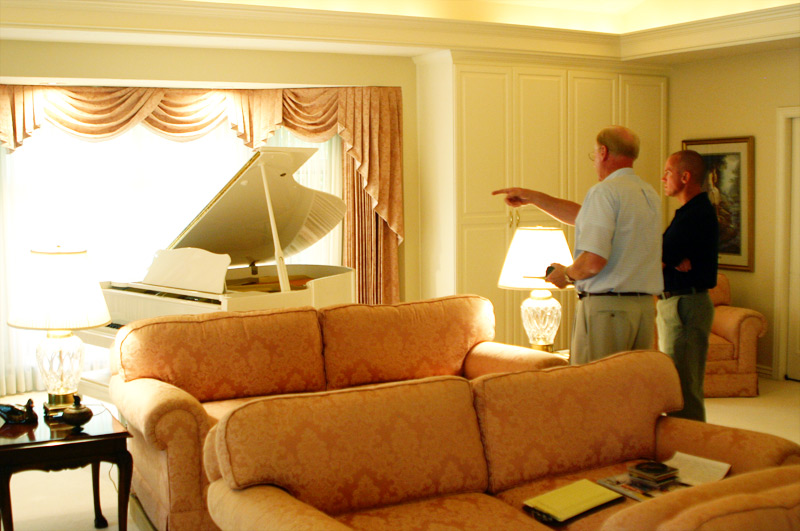
The Yamaha Disklavier piano in the rear of David Wilson’s listening room.
The choral performances we heard, such as one recorded by
the Mormon Tabernacle Choir, were portrayed in an impressively wide, deep soundstage that
was realistically scaled -- read: magnificently dimensioned -- and suitably nuanced. The
excellent sense of space made the chorus sound quite real in terms of scale as it seemed
to melt away the room’s walls and ceiling. Voices were vivid in tonal color and
lifelike in their clarity. The Alexandria X-2s could easily sort out harmonic complexity,
projecting such information to me with ease and subtlety.
The system also seemed to have tremendous "jump
factor": The speakers were lightning-fast in the best sense of the phrase --
transient attacks were razor-sharp, and bass notes started and stopped on a dime. Drum
tracks had no hint of boom in the bass, overhang at any frequency, or dynamic compression
from any of the drivers. The Thor’s Hammer subwoofers easily energized the large
space when asked to do so, but disappeared into the background when they weren’t --
just as subwoofers should.
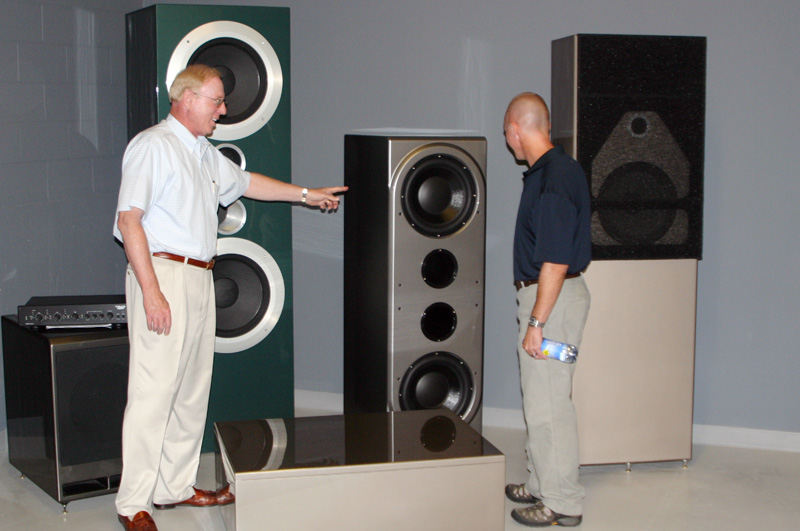
David Wilson points out that while the Thor’s Hammer subwoofer is large,
it’s actually a good bit smaller than earlier Wilson subs.
Perhaps the greatest single impression the Wilson system
left me with was its ability to play whatever was thrown at it, with no sense of being
challenged in terms of macro- or microdynamics: small-scale music was sufficiently nuanced
and, where appropriate, chock-full of harmonic complexity. The large-scale stuff was
downright scary -- when asked to, the speakers could power through the room like a pair of
locomotives. I commented more than once that a particular track would simply break many
high-end loudspeakers currently on the market. It was as if each recording, regardless of
the scale of the music, was exactly what the system could reproduce best -- such was this
system’s tremendous sense of balance. In its ability to adapt to whatever material it
was fed, it was truly chameleon-like.
Company impressions
To say that I was impressed by what I saw and heard at
David Wilson’s factory and home in Provo, Utah, is an understatement. Wilson Audio
Specialties is rightfully proud of its factory and its 45 employees, who manufacture their
products in the old-school sense of that term -- the company doesn’t outsource its
cabinet work or any of its subassemblies. Speakers are built, tested, and finished
on-site, as evidenced by the stacks and shelves full of raw materials (except for the
drivers, which are largely made in Europe, I was told).
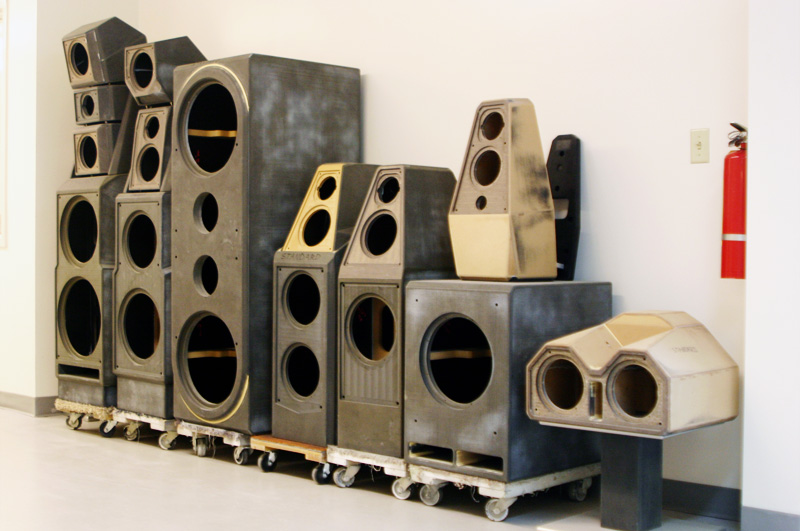
Wilson Audio Specialties’ current lineup of speakers, unfinished.
Wilson Audio has significant investment in machining
capability, finishing facilities, receiving and storage space, and production areas. David
Wilson told me that his commitment to manufacturing efficiency -- a primary reason for the
recent renovation of their factory -- is the main reason that the Sasha W/P is actually
priced lower than the WATT/Puppy 8, which it will eventually replace. In walking through
the facilities, I could clearly see how high a value Wilson places on clean, efficient
work flow, and that quality control is a factor at each stage of constructing a Wilson
loudspeaker.
Conclusion
I was greatly impressed by the sound of Wilson Audio’s
Alexandria X-2 Series 2 and Thor’s Hammer loudspeaker system. But I was just as
impressed with the Wilson factory, and the company’s commitment to make their
speakers in the US with the highest levels of quality and efficiency.
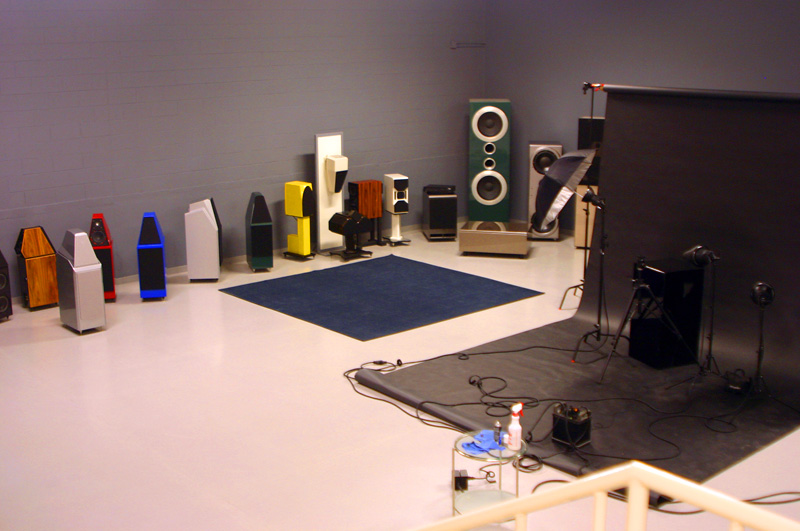
Current and past Wilson Audio Specialties speakers being photographed at the
factory to capture the company’s history.
. . . Jeff Fritz
jeff@ultraaudio.com
|